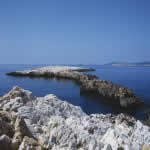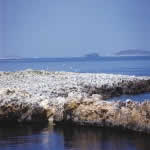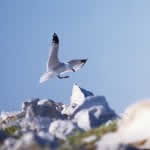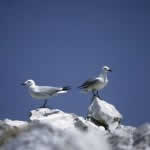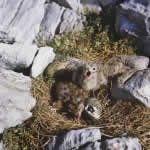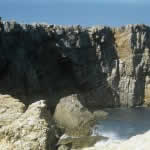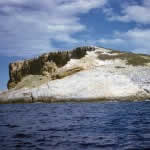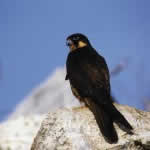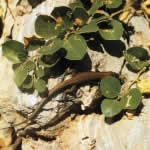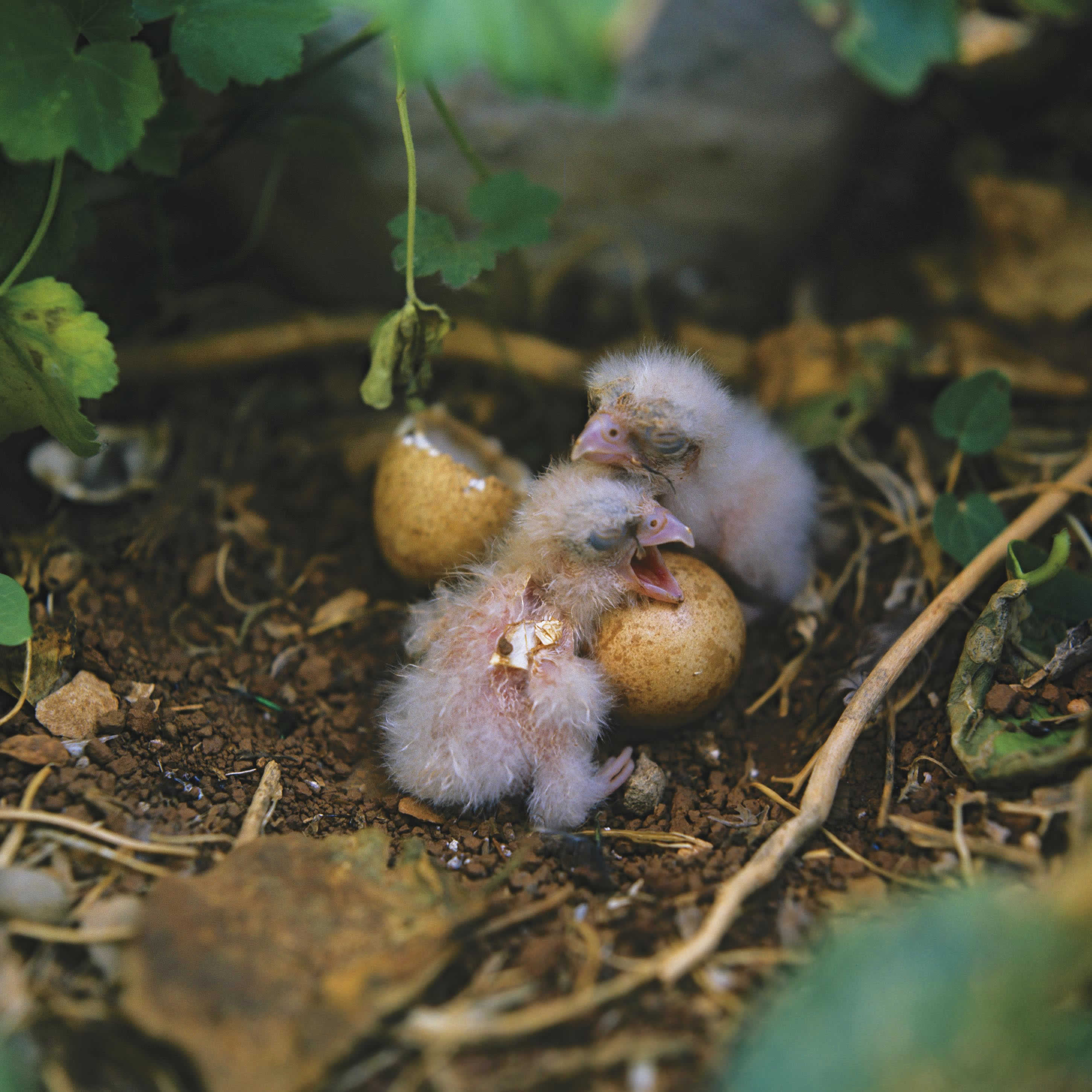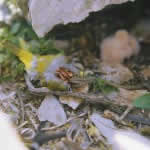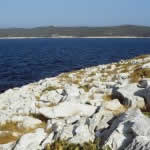Seven small islands of great beauty and physical diversity are located along the north – western coast of Skantzoura: Kóraka, Prasoù (=Skandíli), Kyriáko, Strongylò, Polemikà, Kas(s)ídis and one more islet (= Lachanoù?).
Facing from the seaside this green archipelago, one can sense its rather undisturbed marine wilderness character: it may happen that you watch a seal passing peacefully on the surface through the cannel between Strongylò and Skantzoura and at the same time you listen to the jelling cries of the Eleonora’s falcons above your head and even may spot a flock of bright Audouini’s gulls hovering over the current near the neighbouring island of Kyriáko… all at the same time.
On Kyriáko I discovered a breeding colony of some 15 pairs of Audouini’s gulls in May 1976.
Again in the deep trench between Polemikà and Kas(s)ídis, the towering cliffs echo the splashing surf and the always loudly chatting falcons in their colony high above in the rocks.
And on Strongylò an amazing symbiosis caught our fascination: The falcons breed late in summer/autumn when many small migratory birds pass the archipelago. It is the dry season when for lizards (Podarcis erhardii) there is little to hunt and feed upon, except of the flies attracted by the falcons nests, or rather the bird carcasses there. So several lizards assemble at the nests between rocks on the island’s eroded surface, clean off the meat remains, flies and ecto – parasites: a very particular relationship of mutual advantage…
